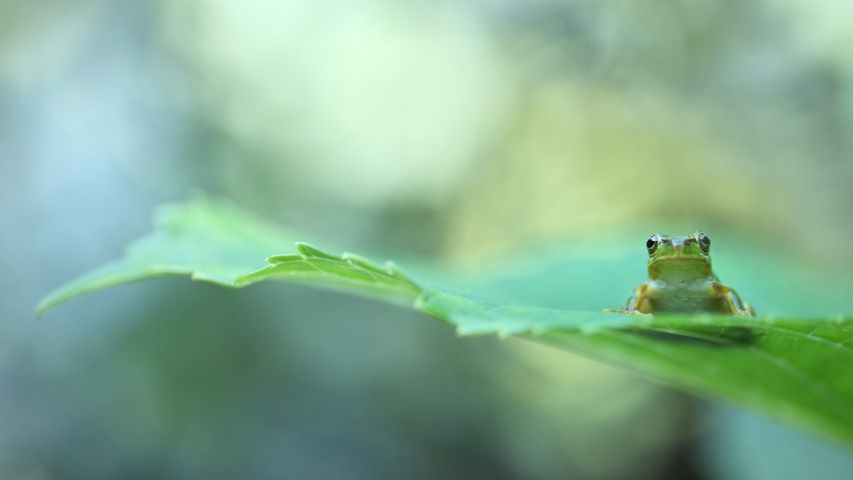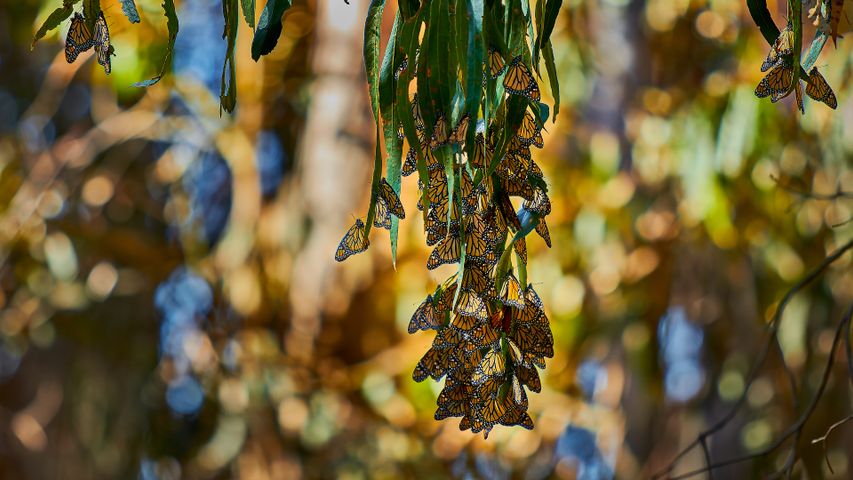A Wallace's flying frog glides to the forest floor
© Stephen Dalton/Minden Picture
It's leap day!
For leap day (the extra day added to February every four years), we're looking at a Wallace's flying frog. Also known as parachute frogs, these critters live in the tropical jungles of Malaysia and Borneo. They spend most of their time in trees, gliding down to the ground to mate and lay eggs. They 'fly' by leaping and using their webbed fingers and toes to glide as far as 15 metres.
Leap years keep our calendar (the Gregorian calendar) aligned with the Earth's revolutions around the sun. People often refer to a calendar year as a 'trip around the sun,' but that trip takes longer than the 365 days of a typical calendar year. It really takes 365 days, 5 hours, 48 minutes, and 45 seconds. Adding an extra day every four years solves the problem—almost. To keep our calendar mostly synchronized with the astronomical year, some further adjustments need to take place. Years that are divisible by 100 are not leap years unless they're divisible by 400. Yeah, it's confusing, and we haven't even mentioned leap seconds, but that's a topic for another day.

 Maritime forest in Cumberland Island National Seashore, Georgia
Maritime forest in Cumberland Island National Seashore, Georgia
 Water lilies at the surface of Cenote Nicte-Ha, Tulum, Mexico
Water lilies at the surface of Cenote Nicte-Ha, Tulum, Mexico
 Spiral aloe, Kangaroo Island, Australia
Spiral aloe, Kangaroo Island, Australia
 Madame Sherri Forest and the remnant of an old castle, New Hampshire, USA
Madame Sherri Forest and the remnant of an old castle, New Hampshire, USA
 Tree frog on leaf
Tree frog on leaf
 Monarch butterflies, Goleta, California
Monarch butterflies, Goleta, California
 Birch trees in autumn, Drammen, Norway
Birch trees in autumn, Drammen, Norway
 Autumn foliage in Schönbrunn Palace Park, Vienna, Austria
Autumn foliage in Schönbrunn Palace Park, Vienna, Austria